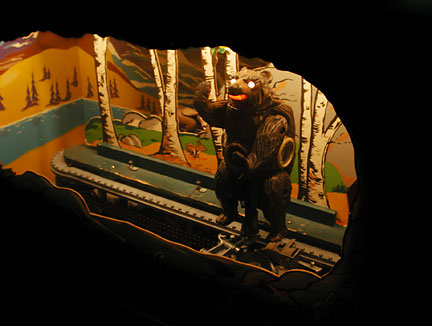Contents:
Introduction
Play
General Description, Components
How It Works
History
Restoration Part 1
Restoration Part 2
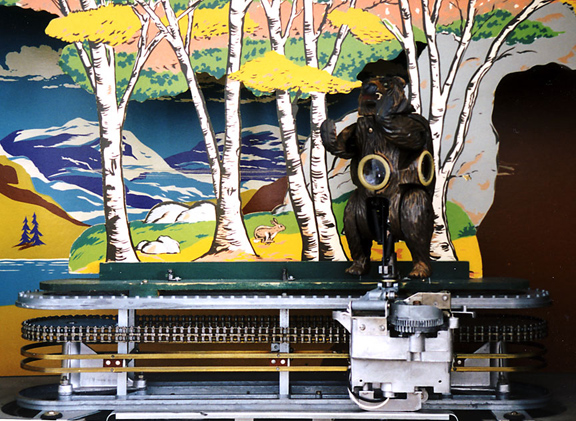
Combination of amplifier, mechanical wonder, and light beam
The construction of the game is a delight. It combines wonderful mechanics, older style electronics with tubes and relays, and even some physics with the dynamics of the lamp and optical elements in the rifle barrel. Imagine the challenges facing the original designers. First, they needed to get a mechanical bear to move realistically Then they needed to be able to focus a narrow beam of light over a distance of 25 or more feet. The light beam is then detected inside a moving object and the hit recorded, all with tube and relay electronics. Add to all of this all the careful design associated with accepting coins and preventing the player from cheating, and you have a formidable design exercise!
Feeling
The user experience while playing a Shoot the Bear game is very different from those found today in front of a video game. There is real three-dimensional object running round. There is lots of noise, most of it mechanical. The rifle feels real and is the right size and weight. This is not a computer-generated image on the television screen with computer sounds coming from a speaker. The bear looks like he is alive and running. There is real distance from the rifle to the object and it takes real skill to hit the target.
General Description
Bear
The bear is about eight inches long and consists of a metal frame covered with a textured, rubber material. The legs pivot at the hip and shoulder joints. There is a light in the head, illuminating the eyes and mouth through use of light guides. Inside the body of the bear is a tube type, photoelectric cell. Supporting the bear is a rod mounted on a wheeled carriage and activated by a series of gears and cams. The bear can rotate, raise up on its hind legs and lower back down to four legs. Wires stationed along the oval track, causing the legs to move realistically activate the front and rear leg pivots.
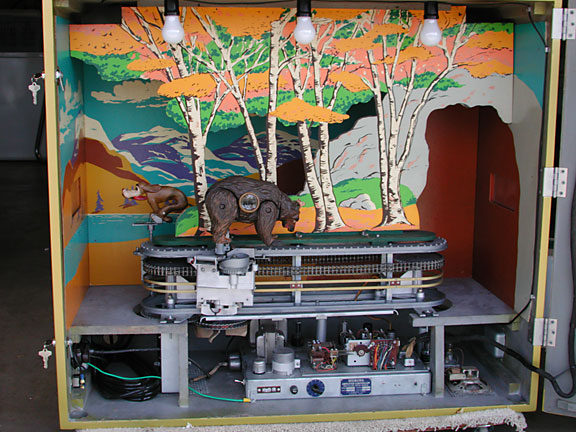
Track
An oblong track, running from one side to the other of the target box, supports the bear's carriage. The track has an upper and lower portion. The upper portion is visible in the window and provides some ratchet pins to control the movement of the bear. The lower portion has two electrical rails and another rail to stabilize the carriage. The electrical rails conduct electricity for the photoelectric tube and the light in the bear. An electric motor drives a chain that circles the track. The bear moves in the same direction as the chain and reverses direction when the motor reverses its direction.
Rifle
The rifle appears to be a real stock with a hollow tube for a barrel. There is a trigger mechanism connected to a couple of contacts. One contact is normally closed and the other is momentary, signaling the pulling of the trigger. The trigger has the correct tactile feel, simulating a real gunÃs trigger.
A focusing bezel mounts a projector light bulb at the back end of the rifle barrel. The bezel has a small hole, allowing only a small portion of the lamp's filament to shine down the barrel. There is also a collimating lens at the end of the barrel, keeping the light beam narrow all the way to the target. The lamp itself has a lens built into the top, helping to focus the beam through the small hole in the bezel.
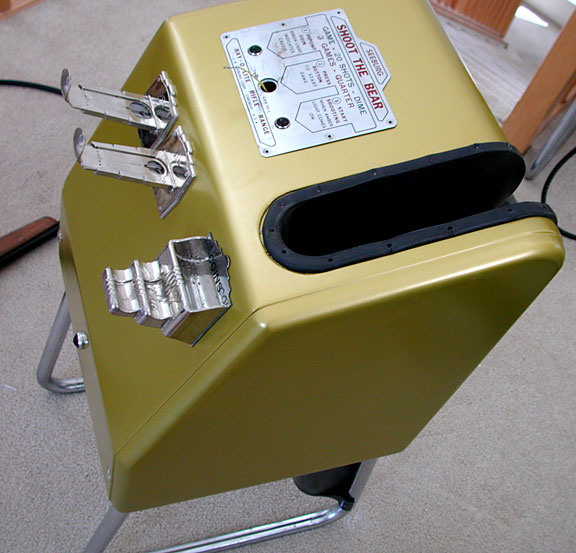
Gun Stand
The gun stand has two coin slides, ten cents and 25 cents. It is connected to the rifle with a five-conductor wire. There is a light to indicate remaining credits and one to indicate the game is ready to play and record shots. There is also a muzzle blast sounder, made from a pinball credit solenoid.
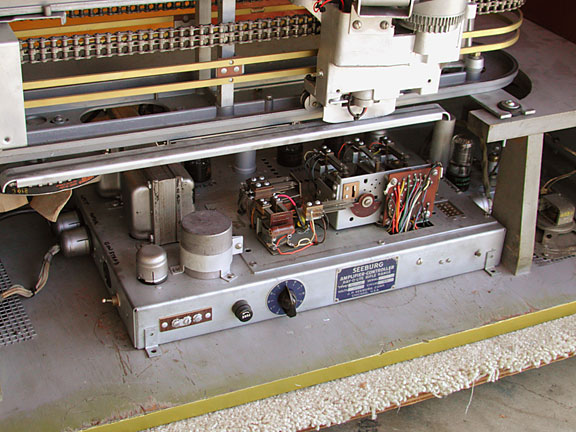
Amplifier-Controller

The amplifier-controller serves multiple purposes. It supplies various voltages required throughout the game, including the gun lamp, scoring relays, indicator lights, coin counter motor, the carriage motor, and various amplifier voltages.
It keeps score, recording shots and hits. It signals the growler when a hit is detected.
It senses the signal from the photoelectric cell and controls the direction of the electric motor and therefore the direction of the bear.
The signal from the bear is amplified through a series of tubes, with some careful circuitry preventing false hits caused by flashes of light other than those coming from the rifle when the trigger is pulled.

